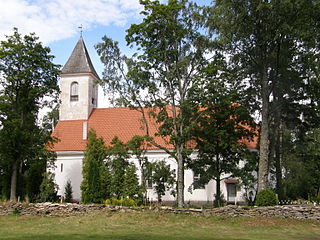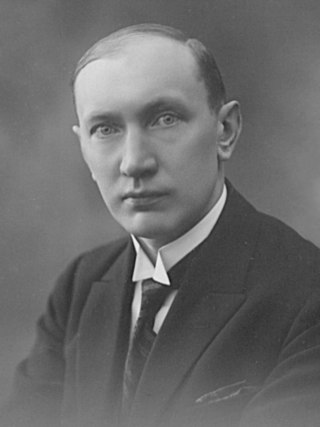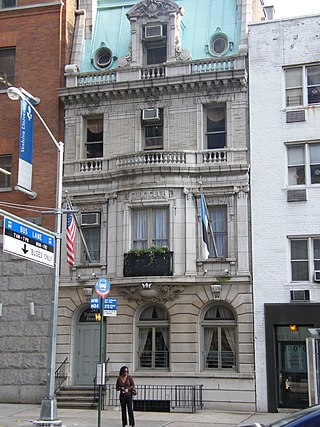
Loksa is a town and municipality in Harju County, Estonia, most known for its shipping industry.

Kalevi Keskstaadion is a multi-purpose stadium in Tallinn, Estonia. Opened in 1955 and having a capacity of 12,000, it is the traditional venue of the Estonian Dance Festival and the former home ground of JK Tallinna Kalev. The address of the stadium is Staadioni 8, 10132 Tallinn.

The history of Jews in Estonia starts with reports of the presence of individual Jews in what is now Estonia from as early as the 14th century.

Mustamäe is one of the 8 administrative districts of Tallinn, the capital of Estonia. The smallest by area, it is at the same time the second largest district by population with 66,305 inhabitants . It is located 5 km from the centre of Tallinn and is bordered by the districts of Haabersti, Nõmme, and Kristiine. Local housing is mostly represented by panel blocks of flats five to nine storeys high, built in the 1960 to 1970s.

The Estonian Academy of Music and Theatre began as a mixed choir of the Estonia Society Musical Department (EMD) on the eve of World War I. The assembly of the Estonia Society created the Tallinn Higher Music School on November 17, 1918. The opening ceremony took place on September 28, 1919. In 1923 the educational institution was renamed the Tallinn Conservatoire. In 1938 the State Drama School was opened. In 1993 the school was renamed the Estonian Academy of Music. In 1995 the Drama Faculty was renamed the Higher Theatre School.

Kehra is a town in Anija Parish, Harju County, Estonia, most known for its pulp and paper mill.

Hugo Treffner Gymnasium is a secondary school in Tartu, Estonia with special emphasis on science education. Founded by Hugo Treffner, it was the only large secondary school in 19th-century Estonia with predominantly Estonian students and no age restrictions. During the Estonian national awakening, it greatly contributed to the numbers of Estonian intellectuals.

The Estonian Students' Society is the largest and oldest all-male academical student society in Estonia, and is similar to the Baltic German student organizations known as corporations (Corps). It was founded in 1870 at Tartu. It has over 900 members in Estonia and abroad.

The Estonian Academy of Arts is the only public university in Estonia providing higher education in art, design, architecture, media, art history and conservation-restoration. It is based in Tallinn.

Paul Nikolai Kogerman was an Estonian chemist and founder of modern research in oil shale.
Kersti Merilaas was an Estonian poet and translator. In addition, she wrote poems and prose for children and plays.
The Estonian Writers' Union (Estonian: Eesti Kirjanike Liit, abbr. EWU is a professional association of Estonian writers and literary critics.

The Civic Club building, now the New York Estonian House, is a four-story Beaux-Arts building located at 243 East 34th Street between Second and Third Avenues in the Murray Hill neighborhood of Manhattan in New York City.
Lia Looveer BEM was an Estonian émigré political activist in Australia.

Aleksander Jaakson was an Estonian general and educator. After beginnings as a teacher in Türi, he served with the Imperial Russian Army in World War I, and was advanced to Staff Captain. During the disintegration of the Russian Republic in 1917, he returned home to establish a branch of the Estonian Defence League. He was a decorated participant in the Estonian War of Independence and later continued serving in the Estonian Defence Forces in various positions, including military education.

University of Tartu Viljandi Culture Academy is an Estonian institution of higher education, situated in the provincial town of Viljandi, central Estonia. The UT Viljandi Culture Academy merged with the University of Tartu in 2005. The UT VCA has been teaching professional higher education and performing applied research within information science, culture education and creative arts since 1952. The academy has about 1000 students, half of whom are open university students. The teaching and instruction are based on the continuity and sustainability of Estonian native culture enriched by new impulses which widen the notion of traditional culture. As of 2021, the Director of the institution is Juko-Mart Kõlar.

Gerd Neggo was an Estonian dancer, dance teacher and choreographer. She studied the musical response methods of É. Jaques-Dalcroze, trained under Rudolf von Laban in Hamburg, Germany, and in 1924 established her own dance studio at Tallinn, Estonia, and promoted modern dance and mime based on classical ballet. During the Soviet occupation of Estonia, she and her husband Paul Olak migrated to Sweden. Her contributions to the cultural heritage of Estonia, as the founder of modern dance and mime in her country, is recognised via a scholarship, awarded annually since 2011.

Marie-Elisabeth "Betty" Kuuskemaa was an Estonian stage and film actress whose long career spanned over sixty years.
Anna Raudkats was an Estonian teacher and folk dance reviver. She wrote several books on Estonian folk dance, occasionally adding elements she had choreographed herself.


















